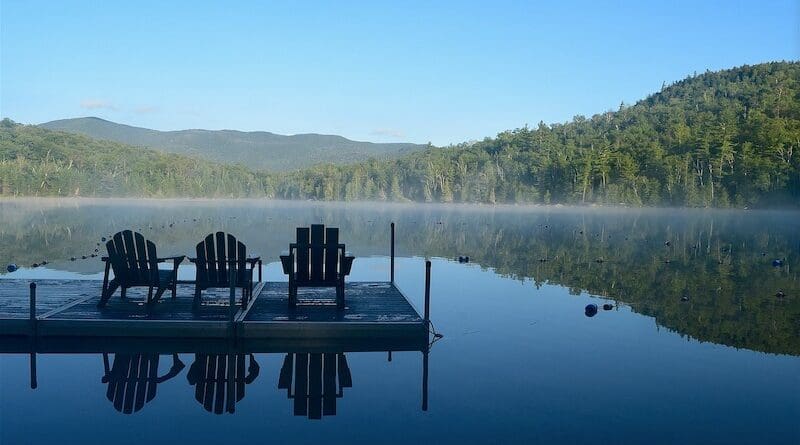Trout At Risk In Most Adirondack Lakes Due To Climate Warming, Lake Browning
Climate warming and lake browning – when dissolved organic matter from forests turns the water tea-brown – are making the bottom of most lakes in the Adirondacks unlivable for cold water species such as trout, salmon and whitefish during the summer.
A new study co-led by Cornell University found that only about 5% of Adirondack lakes may continue to maintain water that is cold and oxygenated enough to support cold-water species given current trends.
The study provides insights into changes in key ecosystem dynamics with potential consequences for the future of temperate lakes in the Adirondacks as well as elsewhere in northeastern North America and parts of Europe.
“After a few more decades of browning, most Adirondack lakes will become either too warm or too deoxygenated to support trout populations,” said Peter McIntyre, a Cornell aquatic conservation specialist and the paper’s senior author. “This is a radical departure from the past, when trout fisheries in numerous lakes were celebrated by locals and tourists alike.”
Increased browning is an unfortunate legacy of a century of acid rain, despite the prominent reduction in new acid inputs over the last few decades. Also, climate change has increased both the frequency of extreme precipitation events and the length of growing seasons, thereby promoting greater runoff of organic matter.
Browner water creates greater heat trapping at the top of a lake, as the sun’s rays are absorbed by the organic compounds in the water, leading to warming. At the same time, brown water blocks those rays from dispersing through the water column, which concentrates all solar heating in a shallow layer of warm, less-dense water that sits on top of colder water layer below. During summer, cold-loving species go deeper to find suitably cold temperatures, but they still need plenty of oxygen.
The researchers found that only 1% of all Adirondack lakes were deeper than 30 meters, and that these deep lakes were unique in avoiding oxygen depletion from joint browning and warming. Another 4% of lakes are very clear and in these lakes expansion of cold-water outpaces expansion of low oxygen zones. In these lakes, a little browning – but not too much – is beneficial, as it protects the cold-water layer at the bottom from heat without driving oxygen depletion. Researchers say that means for 95% of the lakes, any further browning is going to be harmful for cold-water species.

